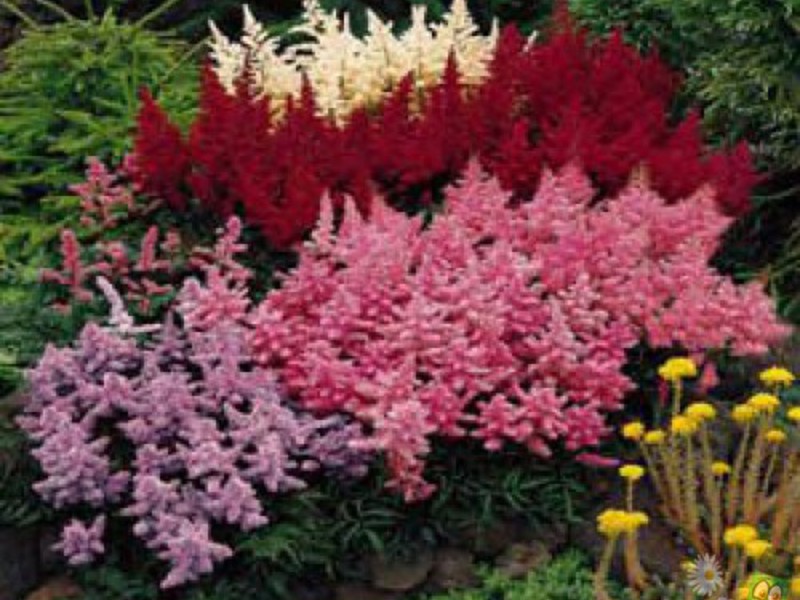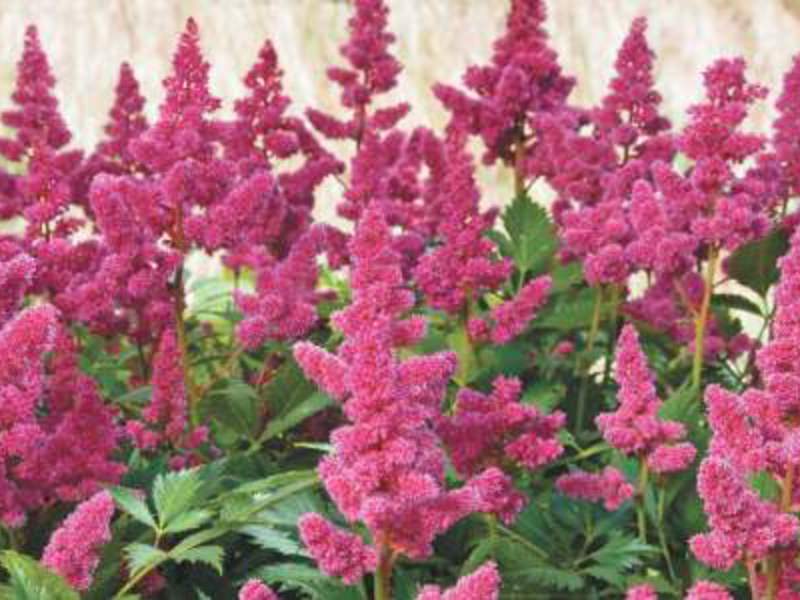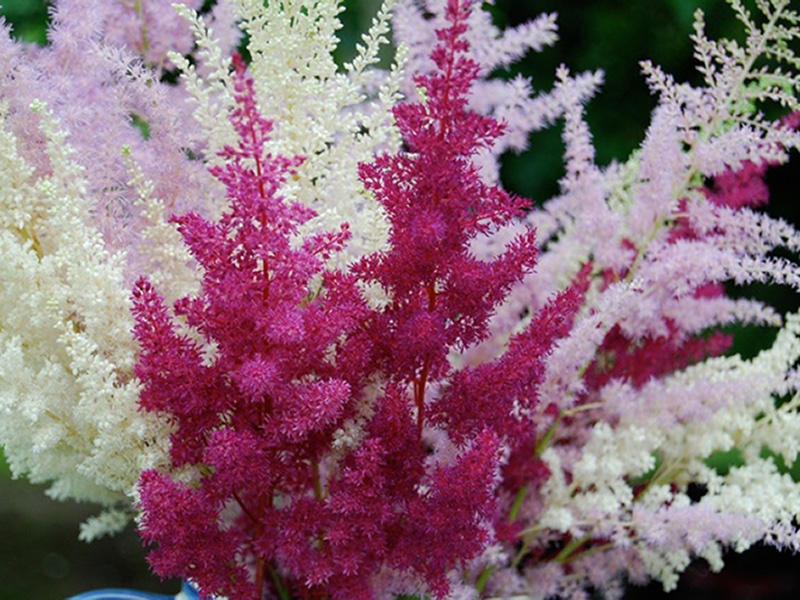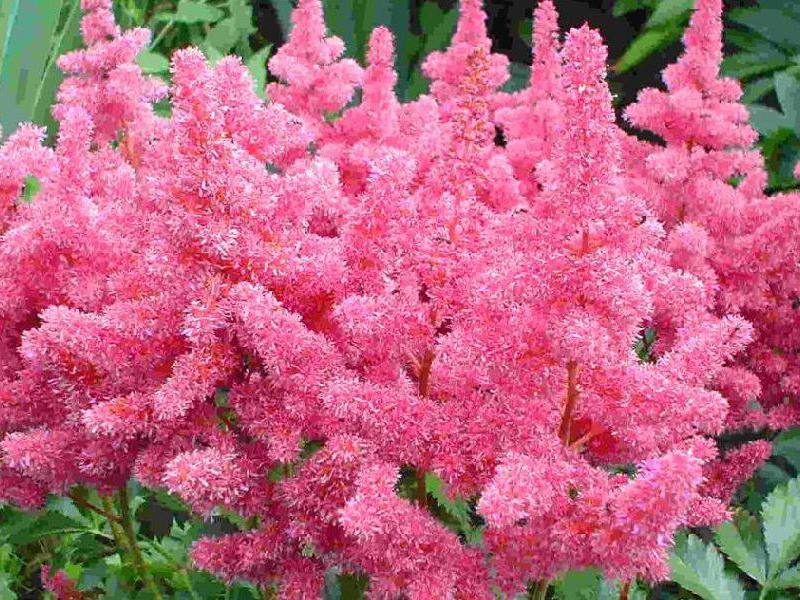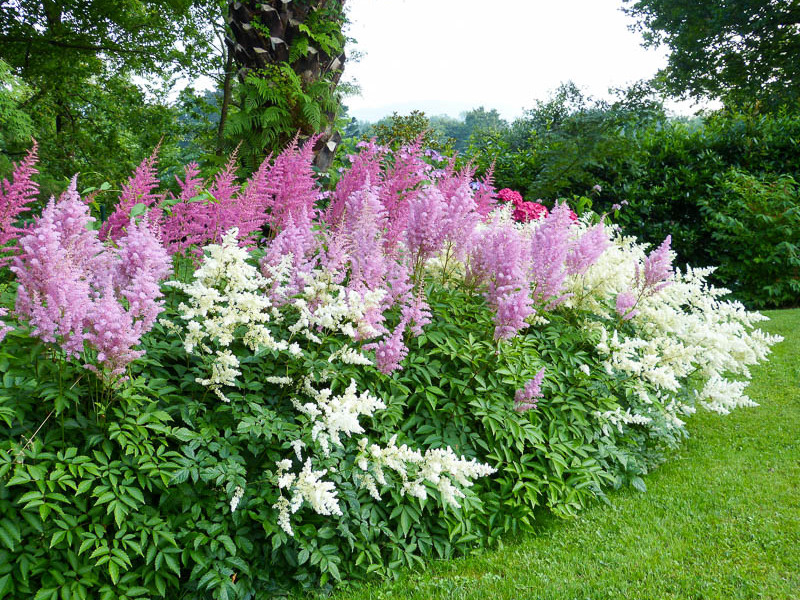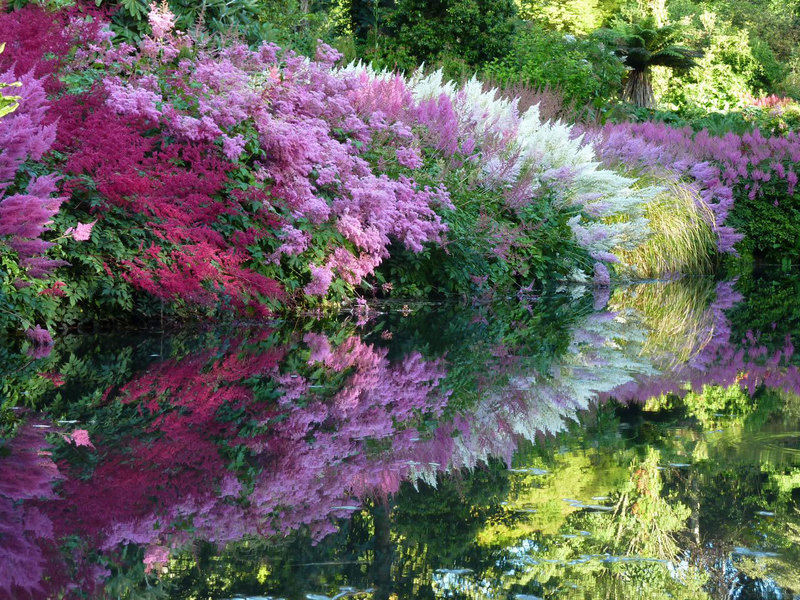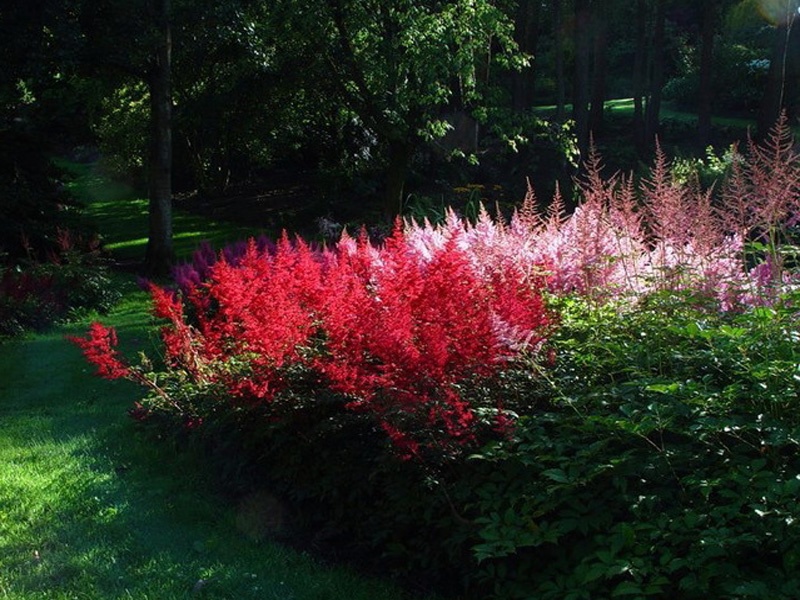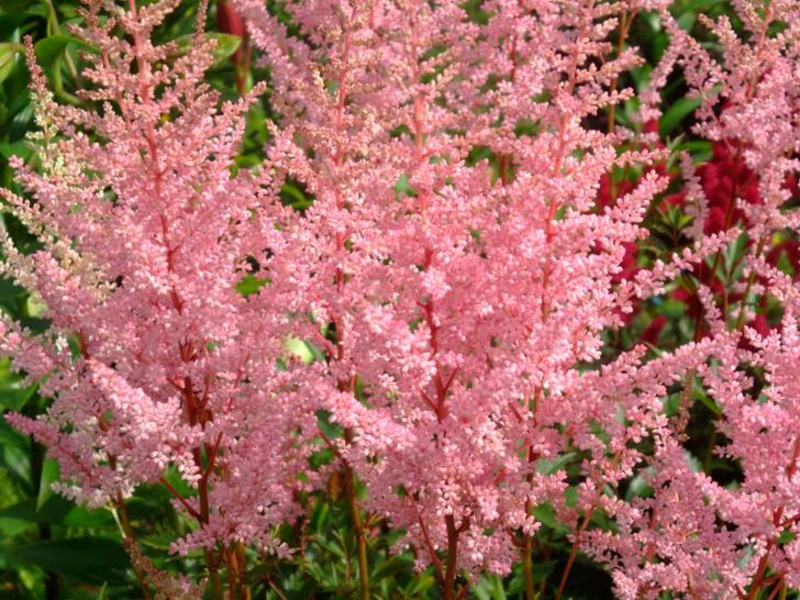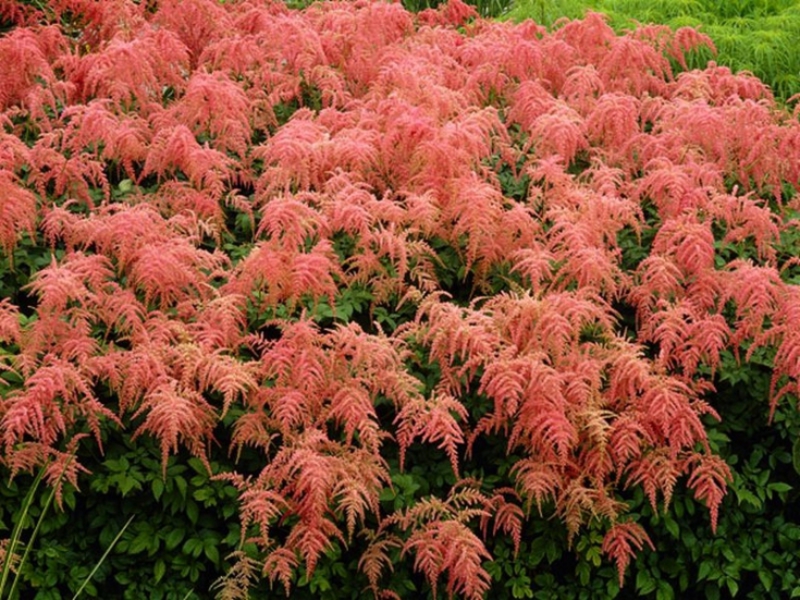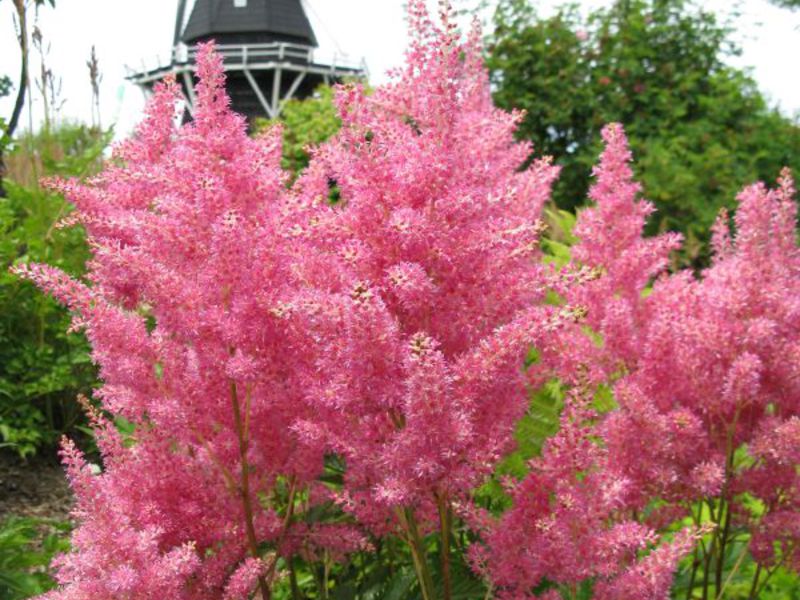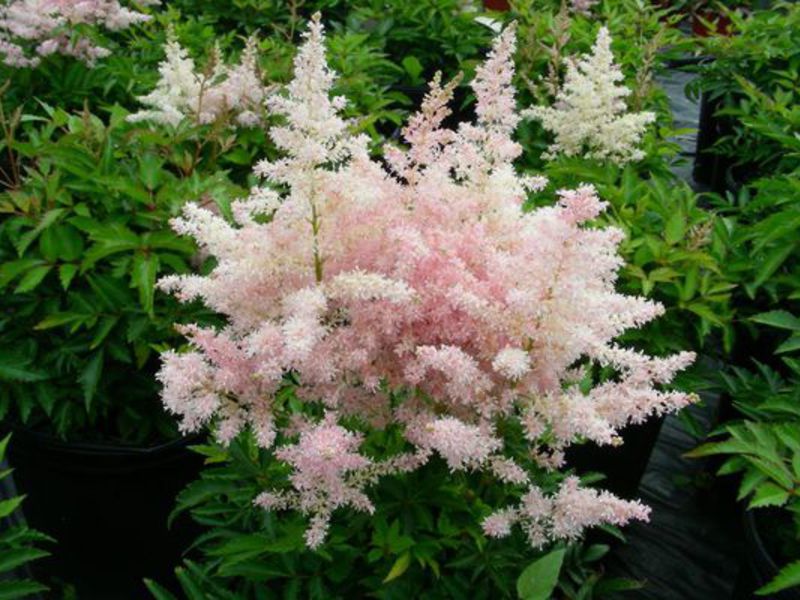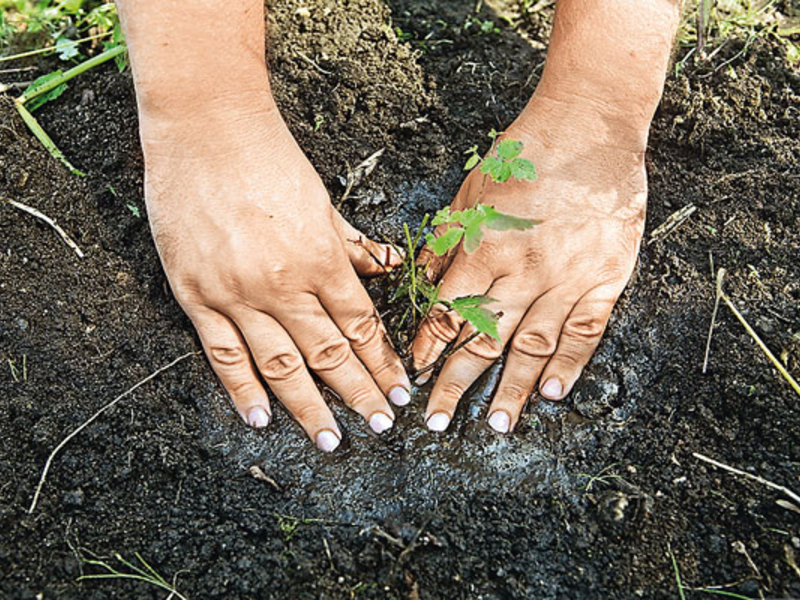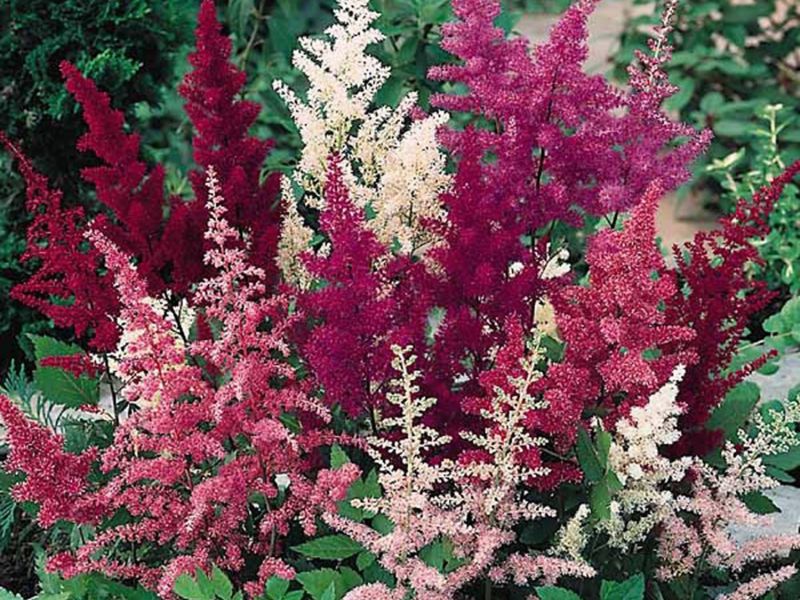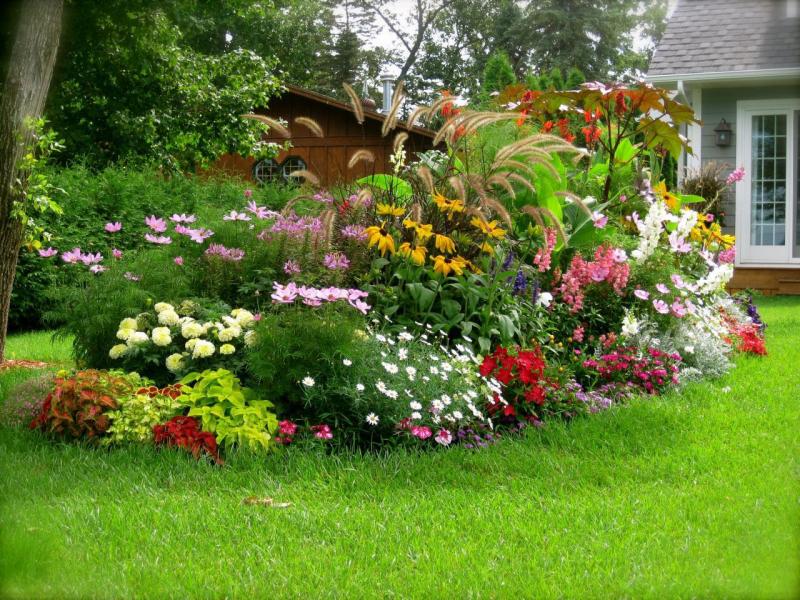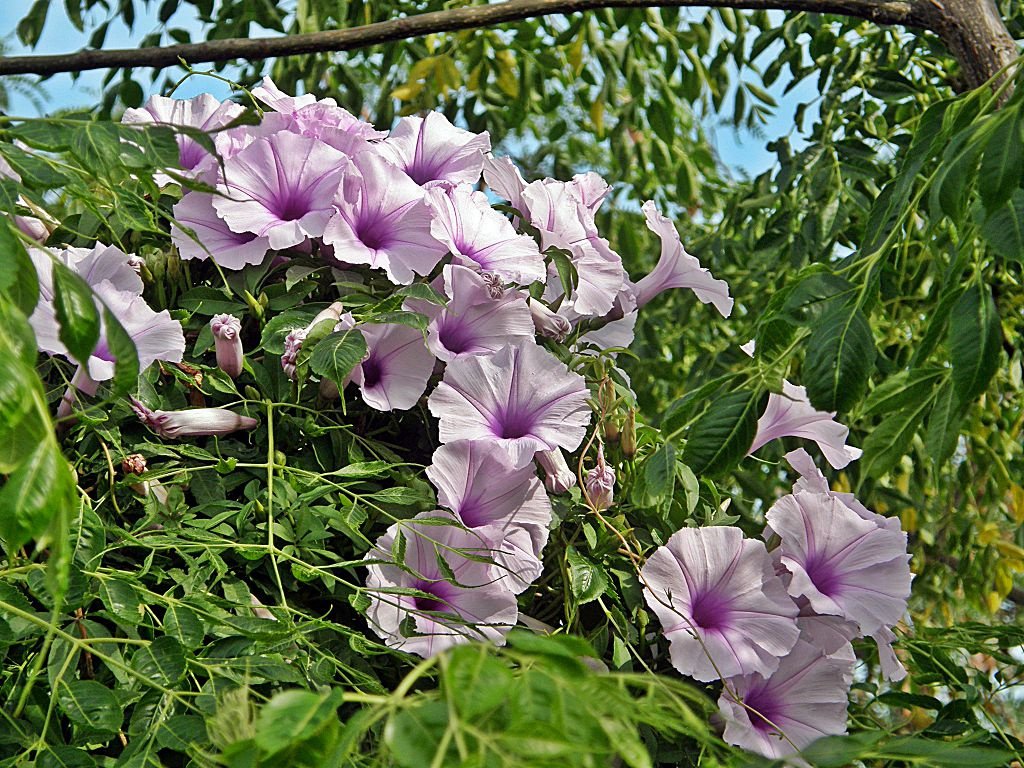Astilba is appreciated by both professional gardeners and amateurs for its unpretentiousness, as well as lush and long flowering. The spreading flower looks spectacular, even if it does not bloom - beautiful green leaves of an attractive shape can decorate any garden plot. In this article, we will consider how to properly grow astilba in the open field, planting features, care and photos of different varieties of this bush.
Content
Morphological features and characteristics of the flower
Astilba looks quite original and presentable, and when it blooms, it simply transforms the entire backyard territory. It is decorative bush with split leaves bright green, located on the branches of a reddish hue.
Gardeners prefer astilba not only because of its lush flowering, but also because, unlike many other plants, it can be in constant shade when planting, creating a magnificent colorful bloom. But strong darkening is contraindicated even for this plant. Landing in partial shade is best.
Astilba can withstand severe frosts, it is almost not exposed to diseases, and even many harmful insects fly around it. This is the best option for a novice grower.
Astilba is perennial flower, his homeland is Asia and Japan. In total, there are more than 300 species, each of them has its own size, shape, color and splendor of flowering. The growth of this plant can be in the range of 15-250 cm... Flowers are in panicles 15260 cm long; after flowering, "boxes" appear on them, in which there are small seeds. Almost all Astilba species begin to bloom in June.
The ground part of this plant dies off in winter, and the root system waits out frosts and begins to grow in spring. Annually, buds form on top of the roots, giving a constant growth of about 4 cm, and the lower part dies off after a while. To ensure a comfortable development of the formed buds, after dying off, soil is poured onto the exposed root.
Varieties of astilba
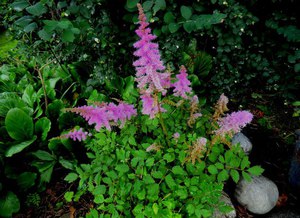 As mentioned above, the breeders really liked the lush astilbe, so they created more than 300 of its species. We will not describe the advantages of each, but consider only the most common and beautiful ones.
As mentioned above, the breeders really liked the lush astilbe, so they created more than 300 of its species. We will not describe the advantages of each, but consider only the most common and beautiful ones.
Recommendation: when choosing an astilba, we advise you to purchase a pitchfork whose height is within 55-75 cm... These large bushes are better able to withstand negative climatic conditions and frost.
Astilba Arends
This is a whole family of astilbe, which is represented by 50 hybrids, which appeared as a result of the selection of David's giant astilbe. They are distinguished by developed trunks up to 160 cm in height. They have a conical or spherical shape with lush vegetation. Flowers come in completely different shades from pure white to bright purple.
Hybrid bushes differ both in size and in a long flowering time - more than a month. The most attractive plant species were created by G. Arends, therefore the class of hybrids was named after this scientist. For example, Astilba Gloria is a perennial plant up to 90 cm long during flowering. This bush winters easily and can be grown on almost any soil except sandy. It is characterized by fluffy pink inflorescences in the form of a diamond, delicate sweet aroma and delicate foliage. Gloria is water-loving, therefore, it is best to plant it on the coast of a lake or an artificial pond. Other hybrids:
- Lilliput is a small plant up to 30 cm long. Dense pinkish inflorescences begin to bloom in late July. Lilliputian is great for equipping an alpine slide or a small backyard flower garden.
- Jump & Jive is a shrub up to half a meter long, blooming at the end of June. Produces large, branched, pinkish buds that contrast beautifully with green foliage.
- Boogie Woogie is also a hybrid species that grows 60-75 cm. In July, it will delight you with contrasting pink diamond-shaped flowers that give the bush a lush shape.
Chinese astilbe
This plant can be up to 120 cm long, with large leaves near the roots and smaller ones near the inflorescences. Starts flowering pretty tightly knit inflorescences up to 30 cm with small purple flowers.
There are also low-growing varieties of Chinese astilba up to 30 cm long and species with pyramidal flowers. This variety of bushes feels more confident when grown in unshaded areas and in partial shade.
Japanese astilba
This is not a relatively tall bush, like the one described above (up to 75 cm) and is characterized by small dense leaves with a pronounced pattern. Flowers of pink and white color bloom much earlier than other varieties, while even after drying, the inflorescences practically do not lose their shape and decorate the flowerbed until the end of autumn.
Japanese astilba is a hybrids that brought Arendson in 1838... Since that time, several more species have been cultivated, characterized by frost resistance and excellent survival in any region.
Common Astilbe
This hybrid very poorly perceives a dry climate and requires periodic abundant watering. The plant can be up to half a meter long and forms thinned inflorescences.
Astilba breeding methods
Growing astilbe in a summer cottage is an easy task. The plant propagates by seed and vegetative method. During the latter, separation of the plant and reproduction by buds is possible. And if this method is suitable for beginners, then the seed method allows you to breed new varieties of plants.
Propagation using seeds
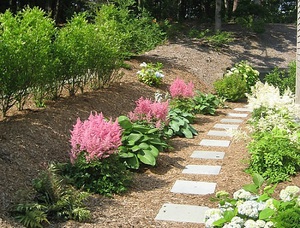 The seeds are arranged in capsules replacing the beautiful flowers. It is necessary to sow them in March, having subjected them to stratification before. For which the seeds are placed in a container with sand and peat in a 1: 1 ratio, put on top snow layer 1 cm ("snow" from the freezer comes up).
The seeds are arranged in capsules replacing the beautiful flowers. It is necessary to sow them in March, having subjected them to stratification before. For which the seeds are placed in a container with sand and peat in a 1: 1 ratio, put on top snow layer 1 cm ("snow" from the freezer comes up).
Snow thaws over time, moistening the earth, enriching it with useful elements and immersing seeds in the soil. When the snow has completely melted, cover the container with foil and set it down the refrigerator for 3 weeks. During this period, the first shoots are formed, they will be hardened and will perfectly tolerate the next wintering.
After 3 weeks, the sprouts of the bush are transferred to a bright room with a temperature of + 22C. Water the plants very carefully, using a syringe without a needle and directing the water only at the root.
When the seedlings are a little stronger and a few leaves appear, transplant them into small pots.
Attention: varietal astilbe will not be able to propagate with the help of seeds, as hybrids cannot retain their characteristic features. Bushes grown by this method are used only in breeding.
Reproduction by dividing the plant
As a rule, astilba is propagated by dividing the plant.This is a fairly simple and effective option.
Dividing the plant:
- Gently remove the soil around the plant with a diameter of 17-25 cm and take out the earthen ball with the root system.
- Remove excess soil to clear the roots.
- Cut the root into parts with a knife, and each part must have at least 3 buds.
- Plant the bushes 25 apart and get enough water every day.
If you divide the plant at the end of February, then by autumn the bush will already delight you with its flowers.
Reproduction with the help of the kidneys
This reproduction is the fastest. It should be carried out in the spring when the shoots grow. Carefully cut off the buds by the root and cover the cut on the branch with charcoal, so no harmful organisms get inside.
Plant the cuttings in a 3: 1 mixture of peat and gravel and cover with plastic. Before transplanting a bush into open ground, it must get stronger and begin its development. A bush can be planted on the site only in the fall.
Landing
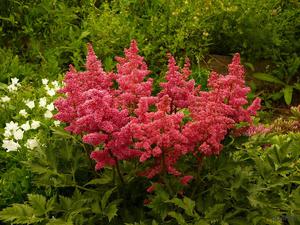 Planting this plant in open ground and care will not require great skills and costs. The most important thing is to find the optimal location and organize the necessary conditions. Plants need to be planted at the end of May on the north side of the site in partial shade.
Planting this plant in open ground and care will not require great skills and costs. The most important thing is to find the optimal location and organize the necessary conditions. Plants need to be planted at the end of May on the north side of the site in partial shade.
If there is a pond on the backyard, then plant an astilba near it. It is desirable to select the soil fertile loamy. Acidity is essential in the range of 5.4-6.4 pH... If there are hosts next to astilba, then their leaves will not allow the bush to overheat in summer.
When choosing a place for planting a plant, you need to take into account the flowering time of different species. Thus, astilba, which blooms in July, loves darkened places more, while other species feel equally well in the shade and in the sun.
By and large, any soil is suitable for astilbe, but if you need to get a lush and long flowering, then you need to choose a site in which groundwater is near the surface. You also need to take care of the presence of phosphorus and potassium in the soil. Digging holes for reproduction, add complex fertilizers at 35 g / sq. m and 2 pieces of bone meal. If you plant astilba in a flower bed, then make a depression 35 cm and put the additives listed above mixed in a mixture with humus.
Astilba landing stages:
- Dig over the area and remove all weeds.
- Fertilize the soil.
- If necessary, do the liming with dolomite flour.
- Make indentations 35 cm apart with a distance of 40 cm.
- Add fertilizer and water it.
- Plant the sprouts and sprinkle so that the thickness of the soil above the buds is at least 5 cm.
- Compact the soil and compost the mulch.
Care
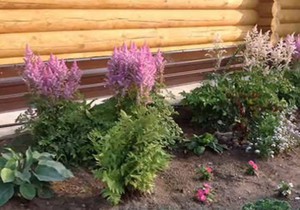 A feature of this plant is that the roots grow upward, and do not tend downward, like other bushes. In this case, the lower processes die over time. And if you do not organize normal nutrition for the new roots, the plant will die. Therefore, every year you need to sprinkle bare roots with soil and prevent them from drying out.
A feature of this plant is that the roots grow upward, and do not tend downward, like other bushes. In this case, the lower processes die over time. And if you do not organize normal nutrition for the new roots, the plant will die. Therefore, every year you need to sprinkle bare roots with soil and prevent them from drying out.
The main requirement during care is constant watering. Regular mulching of the earth will protect the roots from the sun, and also give the opportunity to control the appearance of weeds.
Do not forget that the frequency and amount of watering will depend on the type of astilbe, therefore, study the characteristics of the selected variety, watch the training video and photos on planting this plant. During the formation of flowers, all species require increased watering, and if the summer is hot, then it must be done twice a day. It is necessary to feed the bush from spring by adding nitrogen fertilizers. After fertilizing, the soil must be mulched.
Pests
 Since the homeland of Astilbe is far beyond the borders of our country, it has no enemies here, but still some insects like it. There are quite a few of them, but still they can bring significant damage to the plant.
Since the homeland of Astilbe is far beyond the borders of our country, it has no enemies here, but still some insects like it. There are quite a few of them, but still they can bring significant damage to the plant.
The main pest is the penny. It is a small flying insect that secretes a mica-like foamy solution and lays its larvae in it.As a result, due to the certain chemical composition of these secretions and the presence of larvae, the leaves of the plant curl and covered with various spots... From which the bush partially fades or dies completely. Special chemistry will help get rid of this pest - rogor, aktara, confidor or karbofos.
Two more pests are strawberry and root nematodes. The first is populated in the leaves and flowers, as a result, the leaves curl and become covered with spots, the bush slows down its growth, begins to wither and dies.
Gall nematode settles on the roots, provoking the appearance of growths in which the larvae reproduce. The presence of this parasite can be clearly seen only the next year after infection, when the bush grows poorly, practically does not give flowers. Infected roots must be immediately removed, and the rest should be sprayed with phytoverm.
Summing up, we can say that due to the variety of species, astilbe looks great as a single plant, flower beds and curbs... This bush perfectly coexists with various flower and herbal crops, for example, daylilies, hosts, lilies and heucheras. Due to their ease of care, these spreading bushes will really decorate any backyard area.
